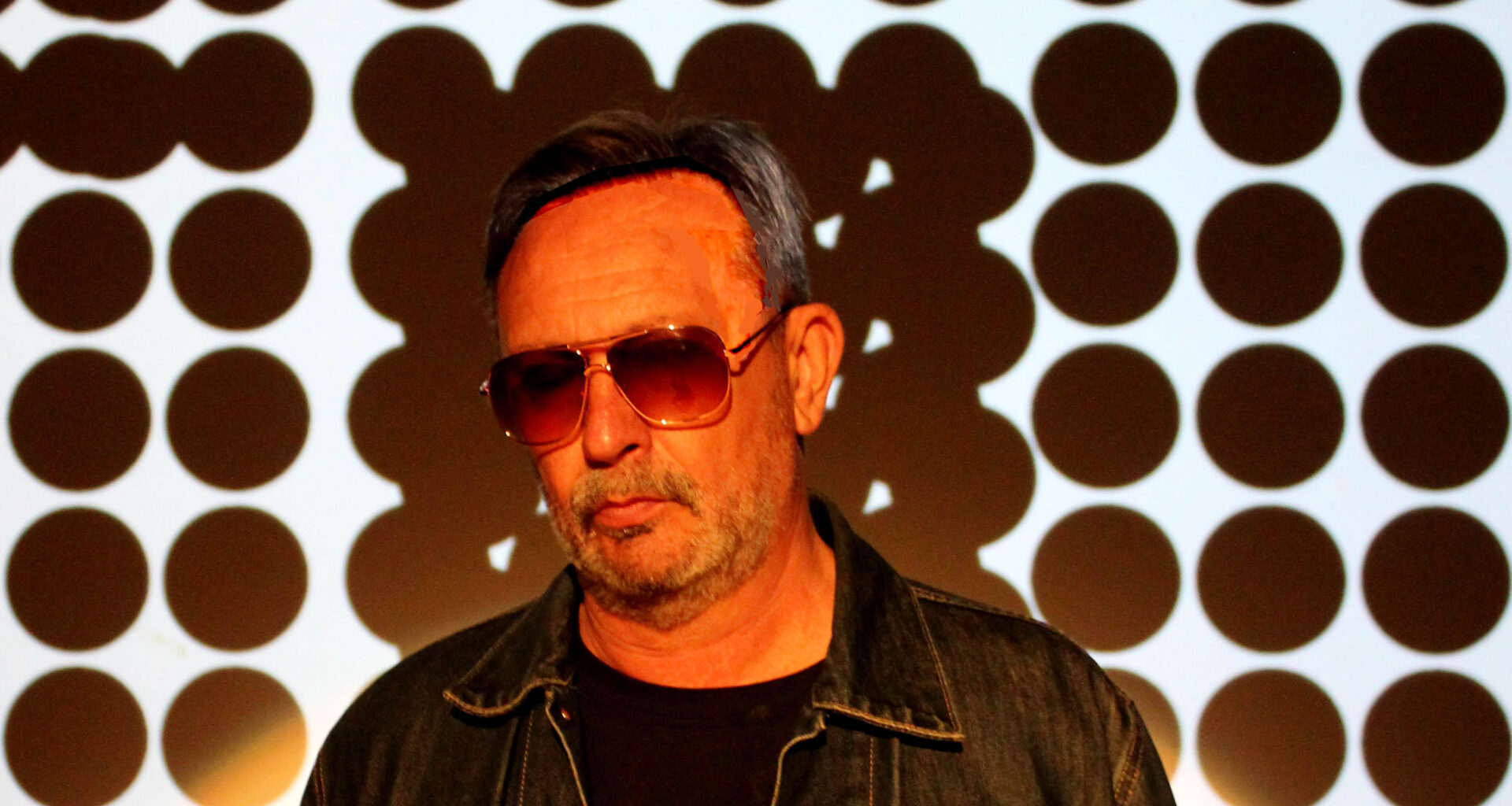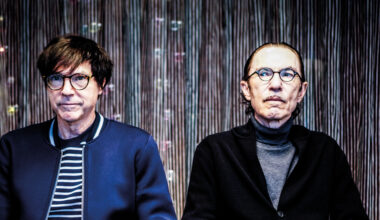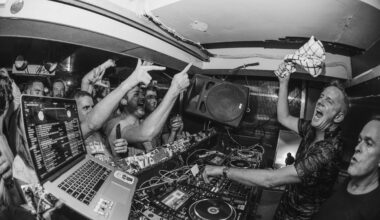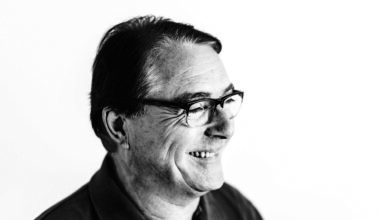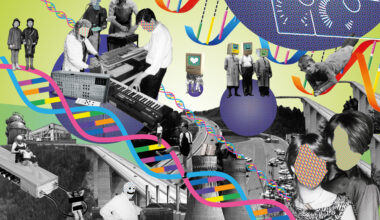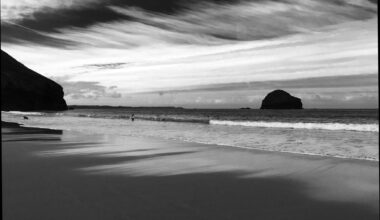As a member of Wrangler and Creep Show as well as holding down a university lecturing post, former Cabs man Stephen Mallinder has somehow found time for a solo album
“The record was meant to be about play and fun; music should have so many different components in terms of what it means. In a sense, we’re all involved in it – no record is a single person’s idea of a record. It requires someone to master it, it requires a reviewer, it requires an audience…”
We’re approaching the end of the fifth decade in which the evergreen, ever-active, ever-energetic Stephen Mallinder, formerly of Cabaret Voltaire, now of Wrangler and Creep Show, has been making music. He looks set fair for the sixth, with multiple irons in the fire as we approach a future he long ago had a hand in mapping out. And yet, ‘Um Dada’ is only his third solo release, and it’s his first since 1982’s ‘Pow-Wow’.
“I’d actually never really thought about it until it was pointed out,” he laughs via Skype from Brighton, where he lives and works. “I’ve always been driven by my own path, but I love working with people. I enjoy the process of being a catalyst for others and them for me. In a way, this isn’t massively different. I got to play everything and shape it, but it was great because I made the album with [Wrangler/Creep Show bandmate] Benge. I’m saying this, but I’ve pretty much written another album on my own! I think it was because we had a bit of a gap of a month, where Wrangler guys were all off doing their own thing.”
‘Um Dada’ is at once a record that could only be made with the technical wherewithal and perspective of 2019, but one which quite consciously harks back to the mid-1980s. Mallinder intended it to have a very specific range, referencing as it does the pre-dawn of acid and techno, figures like Ron Hardy, Larry Heard and the late Derrick Harris, aka Sleezy D, as well as the twilight of the Euro electro and techno-funk of Arthur Baker and DAF, even Liaisons Dangereuses, when electronics were tearing up 3D chunks on the dancefloor. It was a period of cross-fertilisation whose reverberations continue to this day.
“You’re always drawn to the other side,” says Mallinder. “The Americans, the Detroit guys, were drawn to the European side, to DAF, Depeche Mode, while we were drawn to Bambaata. I always thought that was a lovely period in which the fluidity of the conversation was really obvious – a fascinating, fun and enjoyable period.”
The cubist pinging of ‘Working (You Are)’, ‘Prefix Repeat Rewind’ and the rigid funk of ‘Colour’ are dancing reminders of an era where the blueprint for today’s ubiquitous architecture of technology was being laid out, seething with curiosity and, indeed, fascination. Cabaret Voltaire themselves were precursors to all of this, but the limited means at their disposal in the late 1970s meant that their efforts at anticipation came out wonderfully misshapen.
“People thought we had a lot of technology in Cabaret Voltaire, but basically we were rinsing what we’d got.”
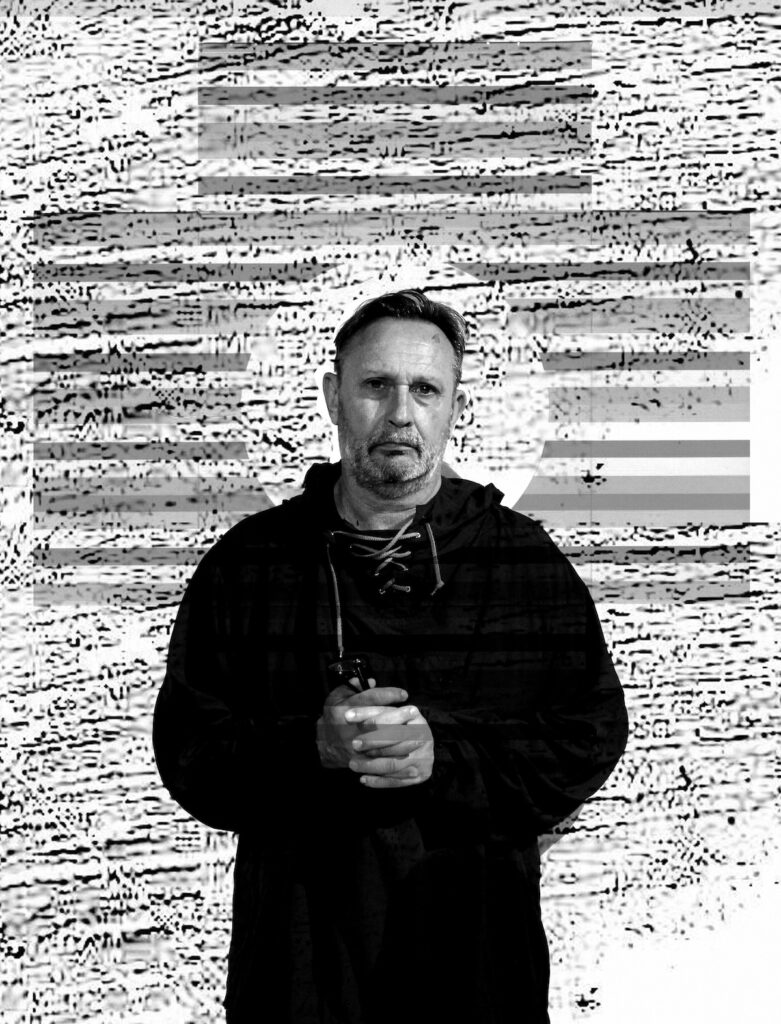
For those used to the trademark “Mallinder growl”, meanwhile, it’s a joy to hear his voice soar and shapeshift all over the shop; treated, echoing, mutating and gracefully fading on ‘Colour’, or Gothic, soulful and vocoderised on ‘Satellite’.
One of the great and yet sometimes maligned boons of contemporary electronic boons is vocal manipulation; devices such as Auto-Tune aren’t mere commercial expedients, but enable a certain fluidity; you can “become” whatever you please. And Mallinder is many Mallinders on ‘Um Dada’.
“It’s the same on the new Wrangler album – my voice goes all over the place. Thing is, although many people make music, not everybody’s stupid enough to try and use their voice. And even though I’m not a singer as such, my voice is a part of my instrumental toolkit. We’re a limited breed. The voice has always been massively important to me; as both a fun thing and a sound source.
“What’s interesting is how far we push and stretch the voice while retaining its original, human component, not so much the ‘soul’, but the grain, texture and emotion, and yet doing something different with it. I don’t have a problem with vocal manipulation, with Auto-Tune. Of course some of it grates and is a bit cheesy, but Kanye West’s best album is ‘808 & Heartbreak’. I have no problem with that.
“I can’t sing like John Grant or people like that, but I can be myself and fuck with my voice. That’s the fun bit. Working with Phil [Winter] and Benge as Wrangler has been great because they openly encourage me to use it in that way. I do all kinds of things, I don’t care. On ‘Stupid’ when I sang in falsetto, Benge was like, ‘What the fuck are you doing?’ and Phil was like, ‘Shut up and leave him to it’.”
Mallinder’s first solo release was the ‘Temperature Drop’ 12-inch in 1981, released on Fetish, who were also home to 23 Skidoo. Dank and industrial, it’s nonetheless itching with percussive funk, furiously sketching out the next phase. In 1982, he followed up with the album ‘Pow-Wow’, which similarly subjects funk tropes to a rigorously mordant treatment, while hinting at a more industrial/mechanical future for the genre.
“I was working with Fetish and they said, ‘If you’d like to do some stuff we’ll put it out’,” he says. “I did ‘Pow-Wow’ prior to the Roland, the 808, electro and Bambaata when it was all still traditional recording technology. I played drums, bass guitars, keyboards – it was like a Prince album!
“It was very fluid, letting tracks run and letting them breathe. I used machines that simulated sequencers and arpeggiators, so it was more suggestive of where music was going. But as well as funk, Bootsy, etc, I was also into things like Jon Hassell.
“Nothing I ever do is a big statement, I just tend to respond to things. And I love the idea of people challenging me. I would have worked with the Cabs during the day and then on ‘Pow-Wow’ at night. I was doing 18, 19, 20 hour days. I was taking drugs as well, obviously. But when Chris [Watson] left the Cabs, and it was just me and Richard, all the energy and focus went on the Cabs.”
‘Um Dada’, the title of the new album, references the art movement of 1916 from which Cabaret Voltaire took their name and their methods. Founded in a Zurich cafe by Hugo Ball, The Cabaret Voltaire was an arts night that became a focal point for a variety of European writers and artists, from Hans Arp to Tristan Tzara, who bleakly parodied the violence of the world war they were escaping by creating violence to art, tearing it apart, reassembling it. “Art and Anti-Art”, as the Dada chronicler Hans Richter put it.
“Dada was a massive education,” says Mallinder. “As teenagers, you got into things through the music press. I got into Burroughs through Bowie, who’d talk about him and things like Fluxus and Dada in a similar way. Richard was at art college, so when we were starting to make music, we were interested in things that cocked a snook, that were irreverent, anti-establishment. We were looking at making sounds, not so much music, and it chimed.”
Get the print magazine bundled with limited edition, exclusive vinyl releases


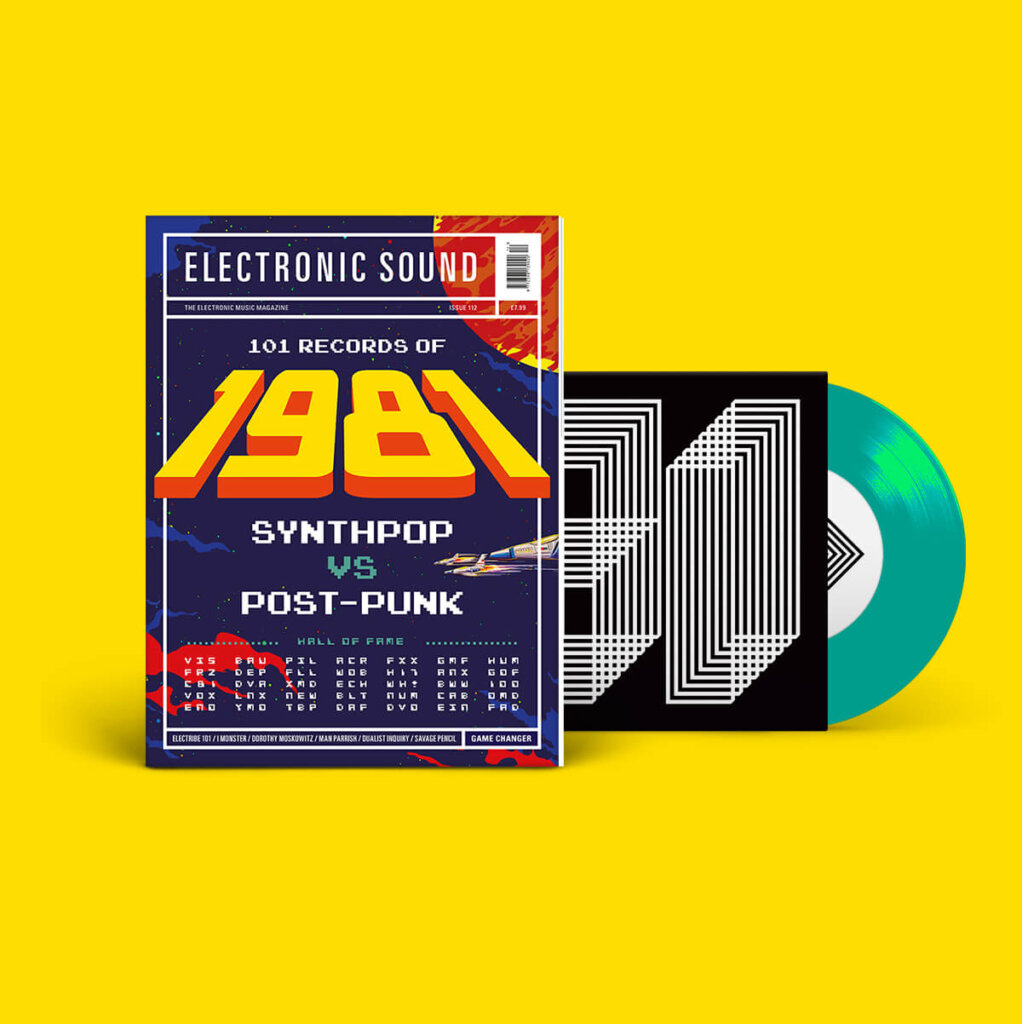
The new album title was conceived in the true Dada manner; Mallinder lobbed some vocals into a sampler and the phrase “Um Dada”, which he never originally uttered, is what the machine chopped up and spat out. This was how the poet Tzara assembled his poems; paper text torn up and put in a hat, the pieces then strewn out and the resulting, chance juxtapositions formed his work. He’s also responsible for the record’s artwork, which is a homage to Paul Klee translated for the digital/technological age.
“I always loved painting,” he says, “I converted my mum’s cellar into a studio when I was a kid, but I don’t really get chance to do it anymore. I appreciate Dada because it dealt with the ephemeral nature of art and how its inherent value is in the experience of making it. So it’s very prescient, very important. Today, the doing, the experience, is more important than the exchange value. It’s a shame but we have to accept that.”
This is among the values he seeks to impart in his current part-time post teaching on the Digital Music And Sound Arts course at the University of Brighton. I wonder if he ever feels tempted to pull the “Do you know who I am?” line on his annual crop of freshers? Do they know who he is?
“It varies from years to year,” laughs Mallinder. “Some years none of them do, but last year most of them did because I was in their parents’ record collections! They figure it out. Their mums and dads invite me round to tea. I’m there to add confusion. I’m kind of a provocateur.
“The students do the most amazing things. I learn as much from them as they do from me. I represent a legacy there; I am part of the canon of what they study, I suppose. It’s a sound art course, which still amazes me. No one did music at university in my day. You went to a conservatoire to do that. My degree is in history and philosophy.
“I work two days a week there and we also put on nights. We did an event at the ICA earlier this year, I curated the night and showed some of the young people’s work. I’m also making a video with Akiko Purser, a Japanese-Danish artist and there’s a 12-inch with a couple of former students, which is coming out on a club label. I see myself as a resource. I don’t try to hold any sway or position, but I do try to get my hands dirty and mess around with them.”
It’s astonishing to think of the contrast between the landscape of electronic music when Mallinder started out, the primitive 1970s, and today’s super-saturated terrain. How do emergent young artists stake a claim, make a mark on today’s environment?
“We tend to think that these kids are all whiz-bang techno,” he says. “But they have rather an ambivalent approach to technology. As older people, and not being digital natives, we tend to think of young people as being swayed in all that stuff, but they’re not. They’ll come in and they’ll want to create a track using an angle-poise lamp, a piece of wood and a guitar string. They don’t necessarily like using computers. Or they’ll get their hands on things like sat nav and CCTV, make art out of them, abuse and manipulate technologies like that. They have a healthy disregard for technology. Sound is such an evanescent medium, it has no material. That’s what makes it the most fascinating medium for art. How people create with this intangible thing, it’s like the last frontier in some ways.”
Mallinder’s own creative endeavours show no sign of slowing up. There’s a new Wrangler album coming in the new year with attendant gigs and Creep Show is still on the boil.
“I’ve not had time to put together a new band for the solo album,” he says. “I considered maybe playing the tunes as a DJ gig, then I thought maybe I could do a stripped down version, with bits of technology, mixed live onstage. In the end, I decided I should write a few more tracks in the same vein, beat-driven, to make up a set. Maybe later I’ll do something a bit more abstract and spoken word.”
However, a natural modesty is perhaps another reason Mallinder hasn’t flown solo more in his career.
“I don’t really like the attention, to be quite honest,” he says.
With Wrangler, an upcoming collaboration with Eric Random and a forthcoming reissue of ‘Pow-Wow’, remastered and with “rejigged” artwork, would it be fair to say that Mallinder has never been busier?
“Yeah. I think so. But it’s gradually built up. For many years I was just focussed on the Cabs, but in this interactive world, there’s so many different things going on, and people tend to ask you to do things that are interesting and I always hate to say no! So, yes, I’m fucking knackered.”
‘Um Dada’ is out on Dais
